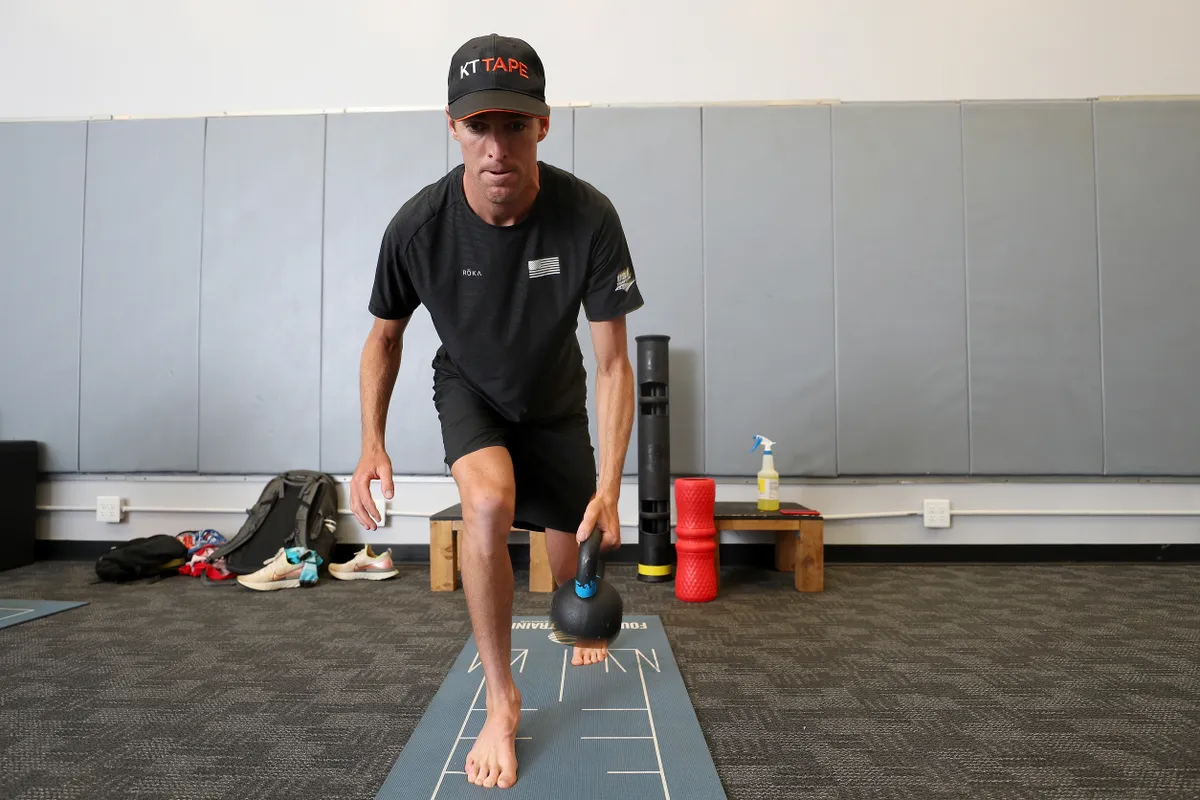The appearance of spring indicates a move to pre-season training, which generally marks an increase in race-specific work, including a greater number of high intensity race-pace and supramaximal training sessions.
While pre-season is characterised by a shift in gear, care is warranted with rapid increases in intensity.
Of all the training volume determinants (frequency, duration, and intensity) intensity provides the most potent stimulus and a concomitant increase in muscle damage and fatigue.
- How can I increase my run mileage and volume safely, without getting injured?
- How much should I reduce training by during the off-season?
Increase training load gradually

We’ve all experienced the delayed onset muscle soreness (DOMS) following the first high-intensity sessions of the season.
The appearance of DOMS is closely linked to a sudden increase in intensity, particularly for load-bearing disciplines (i.e. running, lifting).
This increase should therefore be progressive to avoid the negative impact of significant and sustained DOMS, which can reduce training quality and potentially lead to injury.
- How to avoid training data overload
- How to avoid training mediocrity
- How to balance training and fun
What is proggressive overload?

The process of gradually increasing training volume (inc. intensity) is termed ‘progressive overload’ and is crucial to allow the body time to adapt optimally.
A common mistake is to plan a single point in time to move from one training phase to the next.
Instead, it’s important to merge training phases by gradually introducing training sessions from the next training phase into the end of the current training phase (i.e. add a small number of high-intensity sessions at the end of the winter phase leading into the pre-season phase).
By introducing higher-intensity sessions gradually, you’re less likely to suffer debilitating DOMS, leading to an enhanced training stimulus.
- How to train as you age: what triathletes need to know as they get older
- How to adapt training around menstruation
- How do you maximise athletic performance?
How to plan your training

In addition to the gradual introduction of higher-intensity sessions, plan sessions that focus on skill, and the technical and tactical aspects of racing during pre-season.
This will support the gradual introduction of intensity, as well as make a significant contribution to race performance, i.e. transition training (brick sessions).
Starting to introduce in-season (race specific) sessions into your pre-season phase will allow you to iron out any skill/technical/tactical issues you might have.
Pre-season is the time to make the major changes in technical (race equipment) and tactical (race strategy) aspects of performance, allowing you time during the in-season phase to fine-tune changes leading to enhanced race performance.
Think ahead
In the transition from one training phase to the next, ensure a blended approach across each phase, allowing the gradual introduction of changes in training volume and technical/tactical aspects of performance. Think ahead.
Progressive overload will ensure optimal training adaptation and performance without the pitfalls of rapid increases in training volume, and the last minute (in-season) introduction of technical and tactical changes.
Top image: Unsplash / Emma Simpson
